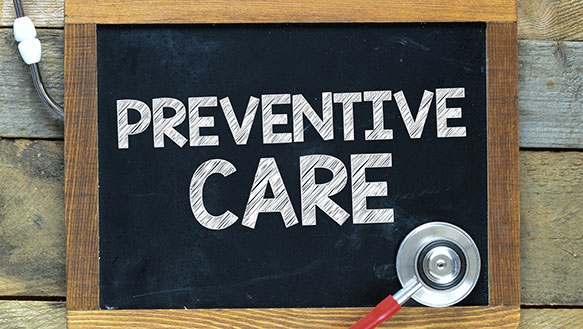Those who have diabetes, whether type 1 or type 2, are at a higher risk of developing a skin condition sometime during their lifetime. Skin problems are sometimes even the first sign or symptom of diabetes.
One of the most common types of skin conditions that those with diabetes may experience is commonly referred to as “Dirty Neck Syndrome”, medically known as Acanthosis Nigricans (AN). What is it really and why does it happen frequently to those who have diabetes?
Contents
What is Acanthosis Nigricans (Dirty Neck Syndrome)?
Acanthosis Nigricans is a common condition of the skin which is characterized by patches or areas of the skin that appear to be very dark with an almost velvet like appearance. These patches or areas usually occur in the folds and creases of the skin.
The affected region sometimes can even become thickened. Most areas of the body such as the groin, armpits, neck and legs are where this condition may often occur.
Signs and Symptoms of Acanthosis Nigricans
Skin changes are the only known symptom of Acanthosis Nigricans. Areas of dark, thickened skin with an almost velvet appearance will become more noticeable. These areas usually change their appearance slowly over time. They may begin to itch or even have an unusual odor to them. It’s important to note that if the dark patches appear suddenly, this could be a sign of something more serious. In either case, seeing your doctor or diabetes care team is important to get the proper prognosis and treatment plan.
I advise reading the following pieces:
Most Commonly Affected Regions on the Body
While Acanthosis Nigricans can appear anywhere on the body, it is more often known to occur in the following regions:
- Side and Back of the Neck
- Under the Arms (axillae)
- Genital and Groin
- Behind the Knees
- Under Breasts
- On the front of the Elbows
- Umbilicus or Belly Button
Skin Discoloration Symptoms
One of the first notable signs of Acanthosis Nigricans is the changing of the skin. Often people with the condition will notice grayish or brown skin discoloration developing. Excess areas of rough patches, extreme dryness and a thickening of the skin, also referred to as hyperkeratosis begins to occur as well. The texture changes in the skin create an almost velvet like smoothness to the touch. When the skin begins to thicken, skin lines become more accentuated which gives the affected region a ridged or winkled appearance. Some may even notice unusual wart like bumps on these affected regions.
Is Acanthosis Nigricans More Common in Adults or Children?
There has been an increase in Acanthosis Nigricans due to the rise in diabetes among both adults and children. While it can occur at any age including children as young as infants with type 1 diabetes, it is more commonly known to happen in adulthood and to those over the age of 40.
Causes and Risk Factors
While having type 1 or type 2 diabetes isn’t the only possible cause of Acanthosis Nigricans, it is one of the most common one. Let’s look at all the other causes and risk factors associated with the condition.
Causes
Hormonal Disorders
Those who have hormonal disorders such as an under-active thyroid, ovarian cysts or adrenal gland insufficiency may develop Acanthosis Nigricans (AN)
Cancer
AN has been known to occur when cancerous tumors such as a lymphoma begin to develop in internal organs like the liver, colon or even the stomach.
Some Medications and Supplements
Higher doses of medications like niacin, prednisone, birth control pills and other types of corticosteroids may cause AN to occur.
Insulin Resistance
Many people as we’ve discussed above, who have AN are also insulin resistant. Insulin resistance is the common cause of the development of type 2 diabetes but may also occur in those with type 1 diabetes (an autoimmune condition) as well.
Risk Factors
- Obesity
Those who have a higher BMI are in a higher risk group of developing AN.
- Family History
Sometimes genetics can play a role in increasing the risk factor of its development.
- Race
Those of native American ancestry have been known to have a higher risk of developing AN (Dirty Neck Syndrome).
Diagnosis
Diagnosing AN usually triggers the doctor to check for the underlying cause. This could mean that someone who hasn’t yet been diagnosed with type 1 or type 2 diabetes may find out they, in fact, do have either or because of the symptoms of AN.
Most doctors diagnose AN by examining the skin. Some may order blood tests to look for the underlying cause of the condition. Diagnosing the condition is just the first key, finding out what is causing it to occur helps with the overall treatment of AN.
Treatment
The goal is first about prevention and second about treating the current outbreak. Treating the underlying condition that is causing the black neck syndrome is always the first line of defense. When there is a diagnosis of type 1 or type 2 diabetes, it’s important to work with a medical and diabetes care team to follow an effective treatment plan on maintaining your blood glucose numbers under control. Keeping blood glucose numbers within a proper target range can help to keep the symptoms of black neck syndrome at bay.
It’s important to note that even when you treat the underlying condition that is causing AN, you still may experience permanent discoloration of the skin. There are a few different options available that can help the skin to return close to its original pigment and color. Speaking to a dermatologist before trying any of the treatment is important as they can help to determine which is the best treatment option to try.
Some treatment options include:
- Exfoliating the skin
- Prescription medicine such as Retin-A, alpha hydroxy acids and other oral medications. Salicylic Acid may also help.
- Laser Treatments
- Chemical Peels
Prevention
Prevention is the best treatment for the condition. Trying to maintain a healthy weight by ensuring proper diet and physical activity routine can help to prevent AN from occurring. Making sure to take care of your mental health is also an important treatment when AN is present. This is because those with AN tend to be self-conscious and embarrassed by the condition. Talking to someone who understands can help in developing coping mechanisms to ensure your mental health is taken care of as well.
Here are some tips on taking good care of your skin:
- Always make sure your skin is clean
- Avoid hot showers, chemically harsh soaps and other products. They increase the chances of your skin getting dry
- In cold weather and winter seasons, always moisturize your skin
- Avoid the urge to scratch your dry itchy skin! It will make your skin worst and the openings are an infection heaven
- Make sure that you treat minor skin cuts as soon as possible with soap and water
- Use antibiotic cream or ointment only upon your doctor's recommendation
Living with Acanthosis Nigricans
AN doesn’t hurt or cause any discomfort. The biggest complaint from those who have the condition is that it can be hard to cover up and quite embarrassing. The condition have been known to cause self esteem issues, especially in young children or adults. Your doctor may prescribe lotions and creams that can lighten the discolored skin to help ease the embarrassment that some may feel.
It’s important to note that bleaching the affected areas can cause further irritation and may not lighten the appearance entirely. Talking to someone about having the condition can help ease any embarrassment that some may have about the condition.
Do you have AN? How have you or are you dealing with it? What treatments have helped you with keeping it under control? Have you had it in the past and have successfully gotten rid of it? If so, do you take any preventive measures? Which ones?
Further reading:
- There's No Such Thing as the Perfect Diabetic
- Exercises That Are Good For Weight Loss If You Have Diabetes
- Feeling Irritated? – This May Be Due to Your Undiagnosed Diabetes
- Vaginal Itching & Diabetes: The Causes Behind Vaginal Itching
- The Ultimate Guide to Ketone Testing
- Why You Should Be Concerned With Pain And Numbness When You Have Diabetes
FAQs
Why are people with diabetes more susceptible to it?
Those with diabetes and insulin resistance are often at increased risk of developing AN. Higher than normal blood glucose levels for a prolonged period play an important role in developing skin conditions such as AN. Often the development of dirty skin syndrome is the first symptom that you may have insulin resistance or type 2 diabetes. Obesity is also another risk factor to developing AN and insulin resistance.
Are there any other reasons why one will have it other than diabetes?
Those who are overweight are more likely to develop the condition. Often with weight loss, the patches may reduce in color and even diminish completely. Some medications can also cause AN to occur such as birth control pills or hormone treatments, which leads many doctors and scientists to believe that hormones play an important role in the development of the condition.
Is it painful to have AN?
Having AN is not painful, it’s more irritating than anything. Your skin may feel dry and velvety to the touch, but the overall main concern for most people with AN is the appearance of what looks like dirty skin, no matter how much they clean it.
When should I consider seeing a doctor?
Whenever you see symptoms or signs of the condition, it’s important to see a doctor. Because the symptoms of AN may be due to another underlying condition other than the skin condition itself.
Are there any complications associated to AN?
One of the biggest complications to having AN is the development of type 2 diabetes or insulin resistance. Doctors are unsure if the connection is due to undiagnosed diabetes before AN occurs, or if AN occurs first then insulin resistance begins to develop. Make sure to leave a comment if you found this article helpful.
TheDiabetesCouncil Article | Reviewed by Dr. Sergii Vasyliuk MD on May 28, 2020
References:
- http://diabetesstopshere.org/2014/11/11/only-skin-deep/
- https://www.healthline.com/health/black-neck
- http://kidshealth.org/en/teens/acanthosis.html
- https://www.mayoclinic.org/diseases-conditions/acanthosis-nigricans/symptoms-causes/syc-20368983
- http://www.winonadailynews.com/lifestyles/dr-frank-bures-the-case-of-the-dirty-neck-that/article_b8bbfad0-5e7f-5c09-bab6-09f4d0a68cc4.html
- http://care.diabetesjournals.org/content/25/12/2353.1
- https://www.diabetes.co.uk/conditions/acanthosis-nigricans.html
- https://www.ncbi.nlm.nih.gov/pubmed/17548847
- https://www.ncbi.nlm.nih.gov/pmc/articles/PMC2948972/
- https://www.podiatrytoday.com/blogged/how-acanthosis-nigricans-can-indicate-insulin-resistance-or-diabetes













